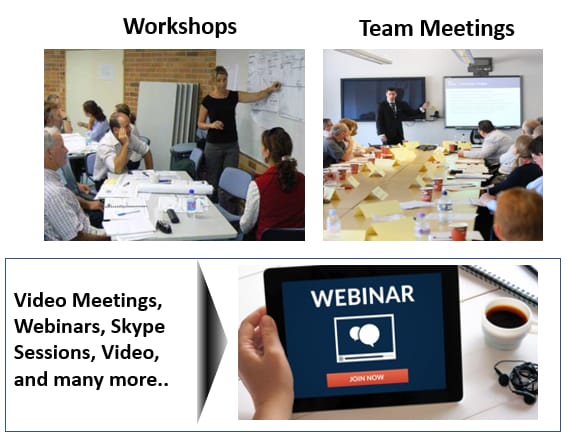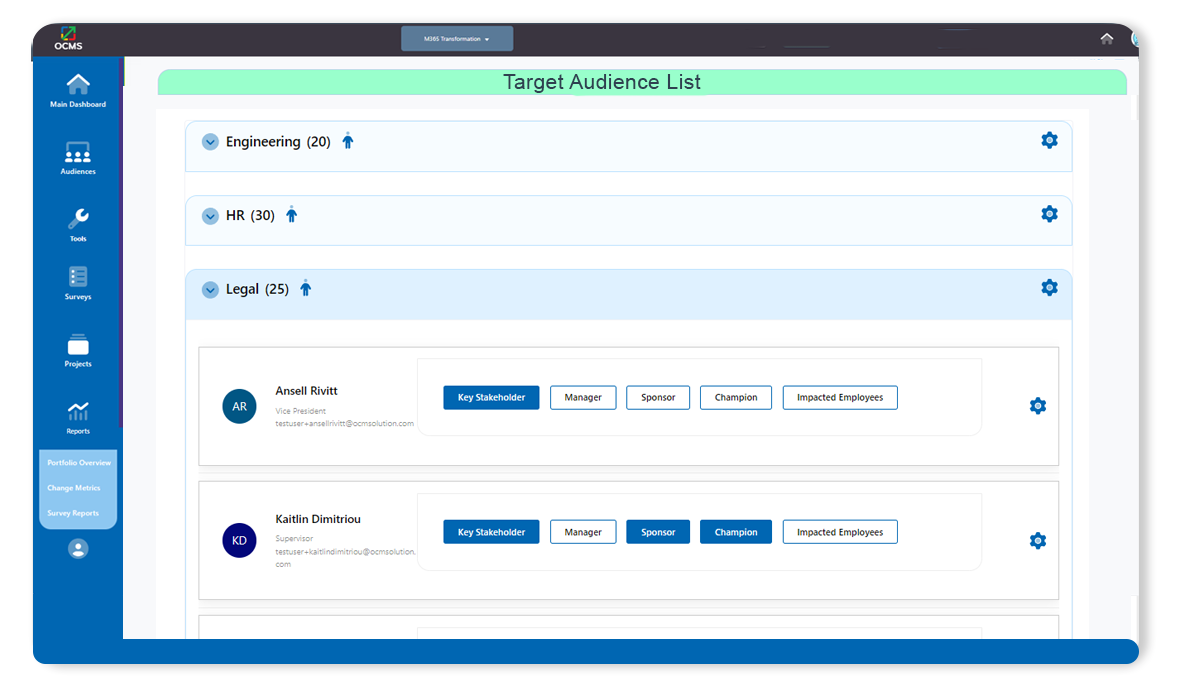Engagement Plan for Engaging with Impacted Users
Top Guide for End User Engagement to Increase Change Adoption
The success of any organizational change initiative hinges not only on the efficacy of the proposed changes but also on how well they are embraced and integrated by the people at the heart of the operation—the end users.
Implementing change can be a complex and challenging process, often met with resistance and uncertainty from employees who find themselves grappling with new processes, technologies, or ways of working.
Due to the critical role that end users play in the success of organizational transformation, a well-structured change management engagement plan becomes not just a necessity, but a strategic imperative.
This article delves into the pivotal aspects of change engagement and crafting a comprehensive change management engagement plan for impacted end users. By exploring proven methodologies, communication strategies, and stakeholder involvement, we aim to shed light on how organizations can navigate the turbulent waters of change with empathy, transparency, and a focus on fostering a culture of adaptability.
Change Management Engagement Plan from the OCMS Portal
Planning change management engagement can take a lot of time. That is… unless you have an automated solution, like OCMS Portal! This end-to-end change management software has a Stakeholder Tool that will generate an end user engagement plan for you based on their stakeholder assessment. Learn more about this #1 OCM platform here.
Why is End User Engagement Important for Change Adoption?
An organization might change its business processes, organizational structure, vision, technology or products, but if impacted users are not successful in their transition (from current to the future state), then the change will not be successful.
To increase the success of a transformational change, business units and end-users impacted by the change need to successfully accept, embrace, and adopt the new processes and solutions. This process is known as “change adoption” and also “user adoption.”
A key function of organizational change management is to engage impacted groups, and individuals to help increase change adoption, and the overall ROI (return on investment) of the change.
Don’t Miss: Stakeholder Engagement & Management Plans
End User Engagement Channels
Selecting the right communication channels for reaching end users is paramount to the success of any transformation initiative and change engagement. Traditional and digital platforms offer unique advantages, and a strategic combination ensures a comprehensive and inclusive approach.
One widely adopted method is face-to-face communication, which allows for direct interaction and immediate clarification of concerns. Town hall meetings, workshops, and one-on-one sessions facilitate a personal connection between leadership and end users, fostering a sense of transparency and trust.
Additionally, printed materials, such as newsletters and informational pamphlets, can be distributed during these sessions, serving as tangible references for employees. While face-to-face communication is invaluable, the digital age has ushered in a new era of immediacy and accessibility, so that should be a foundational element of any change management engagement plan.
Leveraging intranet portals, email campaigns, and collaboration platforms enables organizations to disseminate information swiftly and consistently. These channels provide a space for ongoing updates, FAQs, and interactive forums, promoting a sense of community and engagement among impacted users.
Striking a balance between traditional and digital communication channels ensures a holistic strategy that caters to the diverse preferences and needs of the workforce, fostering a more effective and inclusive change management process.

Effective engagement involves applying a multi-prong process including:



Process Steps for Engaging with Impacted Users & Business Units:
Engaging with impacted users and business units during a change management initiative requires a carefully orchestrated set of process steps to ensure a smooth and collaborative transition. When change management engagement is handled consistently for every project, the organization benefits and impacted users know what to expect when the next change comes around.
By implementing the following change management engagement plan and process steps, organizations can cultivate a collaborative and adaptive environment that empowers stakeholders to embrace change with confidence and commitment.
End User Engagement Process Steps:
- Identify impacted groups, divisions, and departments (read more: how to conduct an impact assessment)
- Identify impacted end-users(read more: how to conduct an audience analysis)
- Determine what engagement channels will be used
- Determine which groups and users should be engaged with first (Set a prioritization sequence)
- Identify key points of contacts, change champions, admins, & other resources that will be needed to help facilitate the change engagement
- Developed customized end user engagement presentation materials
- Schedule and send out communications about the upcoming engagement sessions/presentations
- Execute the engagement
- Conduct follow-up engagements and support
End-User Engagement Process Flow

Change Engagement Calendar of Events
Use a structured calendar of events template to plan out your presentations, meetings, emails, and other types of change management engagement. You can create a calendar from scratch or use the calendar in OCMS Portal’s Communication and Engagement Tool. It includes a ready-to-use calendar of events template, as well as other free change engagement templates, samples, and an advanced analytics dashboard for assessing, engaging and managing your target audience groups.
OCMS Portal’s Communication Calendar for Planning End User Engagement
Would you like to try this communication calendar, plus all our other OCM Tools for free? Sign up for a no-risk trial today. No credit card needed.
Target Audience Analysis & Change Engagement Database
You will also want to create an engagement database using Excel or other tools to document internal and external end-user information, including department, geographical location, and contact information. This database of impacted users and groups is also known as your Target Audience List.
This target audience list is also used document the findings from your target audience analysis, and when grouping people into various stakeholder types for planning targeted change management engagement.
Note that OCMS Portal change management software includes a ready-to-use target audience database, which is linked to an advanced analytics dashboard for tracking and reporting purposes. It also links to all your change management assessment tools, your communications calendar and autogenerated change management engagement plan.

Try OCMS Portal today to leverage this innovative target audience database of impacted users and groups.
Read more: Best Target Audience Analysis | All You Need with Templates and Samples

Did we mention that you can also enjoy free end user engagement templates and other resources? Start a free trial today.
Conclusion: Developing a Great Change Management Engagement Plan
The success of an organizational transformation ultimately hinges on the collective resilience and adaptability of its end users. As we conclude this exploration of crafting an effective end user engagement plan, it is crucial to emphasize the enduring nature of change and the need for continuous support. The journey towards a new organizational paradigm extends far beyond the initial implementation phase.
Leaders must remain attuned to the evolving needs of their workforce, fostering a culture where feedback is not only welcomed but actively sought. By maintaining open lines of communication and demonstrating a commitment to the well-being and growth of their people, organizations can not only navigate change successfully but also catalyze a positive ripple effect, where adaptability becomes ingrained in the organizational DNA.
Change Management Engagement FAQ
Why is end user engagement important for change initiatives?
An organization might change its business processes, organizational structure, vision, technology or products, but if impacted end-users are not successful in their transition, then the change will not be successful. To increase the success of a transformational change, business units and end-users impacted by the change need to be engaged with and supported.
What are some types of change engagement?
General communication (via email, newsletters, and other digital channels) is one process for engaging impacted users. Another engagement process is via face-to-face or virtual engagement via meetings, townhalls, and workshops.
What is a target audience database used for?
The target audience database is where you will keep track of impacted users and business units. You can track stakeholder analysis, location, department, email address, and other important information on your impacted users.
Note: Content on OCM Solution's ocmsolution.com website is protected by copyright. Should you have any questions or comments regarding this OCM Solutions page, please reach out to Ogbe Airiodion (Change Management Lead) or the OCM Solutions Team today. OCM Solution was previously known as Airiodion Global Services (AGS).
External Sources: stock.adobe.com, https://pixabay.com/photos/startup-meeting-brainstorming-594091/







